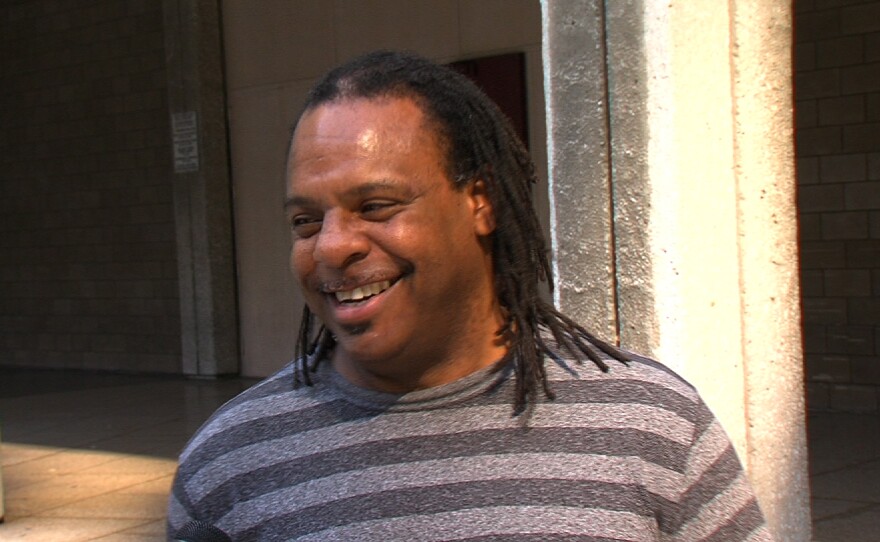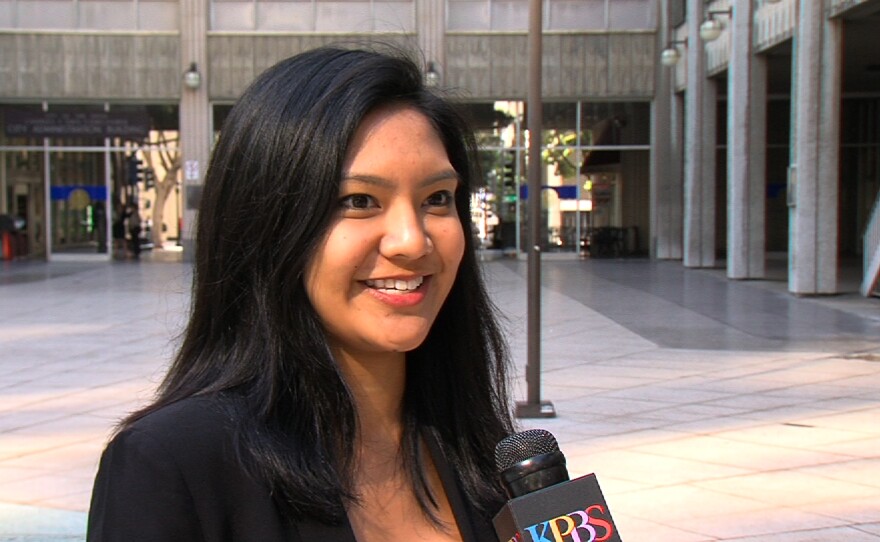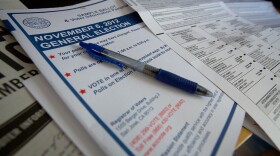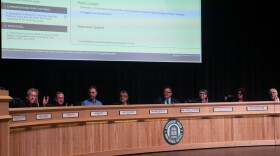Get ready voters. A lot of interests could be vying for your money on the 2016 ballots.
At least five different measures are being batted around that would raise taxes in some way, and that’s not including other dollar items such as a minimum wage increase, potential school bonds and a request to spend public money to build a Chargers stadium.
Here’s a summary of each:
City of San Diego infrastructure bond: Once called the “mega bond” because it would collect funding for a variety of city infrastructure, including roads, sidewalks and parks. City Councilman Mark Kersey, chairman of the City Council’s infrastructure committee, said in January that he would put an initiative on either the June or November 2016 ballot but has not yet released plans.
Kersey said last week he is “still working on developing an initiative that would secure funding for infrastructure” and will make some of those plans public in the “next several weeks.”
In June, the Independent Budget Analyst’s Office outlined different ways the city could raise money for infrastructure repairs, including an increase of the city’s sales tax from 8 percent to 8.25 percent; an increase in property taxes that would mean about $64 a year for a $470,500 home; or ending free trash pickup for single-family homeowners. All would require two-thirds voter approval.
Kersey said his proposal would “not necessarily” be a sales tax increase.
“As I’ve said all along, I think anything we do must be politically feasible (confident it has a good chance of passing) and financially feasible (actually able to make significant progress toward rebuilding San Diego),” he said in an email.
Mayor Kevin Faulconer opposes an infrastructure sales tax increase. His spokesman Craig Gustafson said the city “has large cash balances now, so before San Diegans are asked for more money, we should spend the money we have.”
Gustafson added that the mayor has budgeted enough money to repave 1,000 miles of streets in five years and has proposed more than 20 reforms to the city’s infrastructure program to better manage its funding.
“Those reforms must be in place before asking San Diegans to support a tax increase,” he said.
“We’re always willing to look at any well-meaning ideas and potential initiatives, but rather than waiting for a ballot measure — which may not pass — to address the problem Mayor Faulconer is making investments right now to help improve our neighborhoods,” Gustafson wrote in an email.
SANDAG quality of life measure: The San Diego Association of Governments is polling on whether San Diego County voters would support a half-cent sales tax increase to raise funds for infrastructure and other projects, including habitat conservation and improving river and ocean quality.
The measure would need two-thirds of county voters to approve it.

SANDAG Executive Director Gary Gallegos told KPBS that the board will decide on Friday whether to pursue such an initiative.
“The question for the board is not are we absolutely going to move forward with a measure, but are we willing to go to the next step,” Gallegos said. The next step would be to come up with a funding plan. If the board agrees, SANDAG would spend the next four months creating a plan and an ordinance and would send it to the county Board of Supervisors for approval in July. It would then go on the November 2016 ballot.
Gallegos said SANDAG needs more local funding to enact the transit projects in its recently approved Regional Transportation Plan, including a purple trolley line from San Ysidro to Sorrento Valley. He said some of that project’s $6 billion price tag could be covered by federal funds, but SANDAG can’t secure federal funding without local matching funds.
“Absent local funding, the purple line will not be possible without new local resources,” he said.
Hotel room tax for San Diego Convention Center: Faulconer has said he plans to put a hotel room tax increase before voters in 2016, which would raise funds to expand the San Diego Convention Center. The initiative would require two-thirds voter approval.
Cory Briggs and Donna Frye's Citizens’ Plan for the Responsible Management of Major Tourism and Entertainment Resources initiative: Attorney Cory Briggs and former City Councilwoman Donna Frye are proposing a multifaceted ballot initiative that would raise hotel room taxes from 10.5 percent to 15.5 percent and eliminate the Tourism Marketing District, which collects a 2 percent fee on hotel room rates.
The proposal would also create what Briggs is calling an entertainment overlay zone around Petco Park that would allow an expansion of the Convention Center and a new stadium to be built. It would prevent the city from spending any taxpayer money on a new downtown stadium for the Chargers and block any Convention Center expansion on the waterfront.

Briggs said the goal of his initiative with Frye is to “ensure that the city's major tourism- and entertainment-related assets are responsibly managed.”
Asked how they would sell it to voters, Briggs responded that its results would speak for themselves.
“The initiative would put at least $18 million of new TOT revenues into the city's general fund – all without earmarks and all without new taxes on residents,” he wrote in an email, referring to the Transient Occupancy Tax on hotel rooms. “It would also ensure no taxpayer subsidies for a new stadium downtown and give the City’s current plan for Mission Valley an exemption from environmental laws that the plan doesn’t currently have. It would protect the downtown waterfront, the San Diego River, and the beaches in between. Most importantly, it gives the public a say in big matters that have stymied civic progress for more than a decade.”
He told Voice of San Diego that his measure aims to appeal to “all of the people who care about issues that in isolation have vexed the city for a long time and have kept us from moving forward collectively for the common good.”
An updated version of the initiative released last week is now 77 pages long. Briggs said that's due to a revised introduction to help voters understand the importance of the initiative and inclusion of back-up materials referenced in the substantive portion, "which was done for the voters’ ease of reading and in the interests of full disclosure," he wrote.
City of San Diego firehouse bond: City Councilwoman Marti Emerald is backing a property tax increase to fund construction of 19 new fire stations.

The 30-year bond would raise the property tax on a $470,000 home first by about $12.50 a year and then by $25 a year, Emerald said.
She said she’s made presentations to 10 community groups so far, all of which have endorsed the measure, and plans to continue through February. She will bring the proposal to the City Council in June in hopes of getting it on the November 2016 ballot.
The bond would also require two-thirds voter approval.
How many is too many?
If voters see too many competing requests for their money on the same ballot, they are more likely to reject all of them, said Mesa College politics professor Carl Luna.
“It’s kind of like cod liver oil, you have to do it in small doses,” Luna said. “So if you have the city and the county both trying for an infrastructure tax, and a Convention Center tax, and a Charger tax, every additional one you’re increasing the odds of them all going down.”
Faulconer spokesman Gustafson is aware of the problem.
“There’s always a concern that too many ballot measures, especially those advocating a tax increase, could lead to voter fatigue and then all of the initiatives get rejected at the ballot box,” he said.
But he said the mayor is confident his Convention Center measure will succeed because “the tax would be paid by out-of-town visitors staying at our hotels, not everyday San Diegans.”

In 2004, San Diego voters twice rejected measures to raise hotel room taxes, which would have given an additional $8 million to the fire department. The devastating Cedar fire was four months before the first election.
Emerald also said she isn’t worried because “the outreach we’re doing is so comprehensive that by the time November rolls around everyone will be aware of the firehouse bond and we should be OK.”
Her measure will spell out exactly where the money will go: to fire stations proposed in a 2011 report.
“I understand other organizations want to put bonds on the ballot, but none of them have been clear about what they want to do with the money,” she said. “This one is crystal clear.”
City versus county infrastructure tax
The bigger question is whether the city or county will try for a sales tax increase to pay for repairs to roads, sidewalks and other infrastructure.
SANDAG’s Gallegos said he’s aware of the concern of overloading voters, which is why his regional planning agency’s measure would include some funding for each of the 18 cities in the county to use on infrastructure improvements, as well as provide funds for unincorporated county areas. His board includes two county supervisors and elected officials from the 18 cities.
“We continue to dialogue with the city of San Diego on this issue to figure out what their needs are and if we can help them with those needs,” he said.
Councilman Kersey, who initially floated the city infrastructure bond idea, and City Councilman Todd Gloria sit on an ad hoc SANDAG “Funding Initiative Working Group,” which Gallegos said is providing input on polling over the ballot measure.
He said it’s too soon to know how much money each city would get in the potential SANDAG measure.
That’s a concern for San Diego Independent Budget Analyst Andrea Tevlin. If city voters approved a quarter-cent sales tax increase, she knows how much money it would reap: $68 million a year.

“That would all go for our projects,” Tevlin said. “The question that’s still out there with SANDAG is how much will be divided between roads and environmental and some of these local projects.”
Tevlin said the city is facing a $1.7 billion funding gap over the next five years between what it needs to repair things like fire stations, streets, and parks and recreation facilities and the money it takes in.
“Our needs are vast, and we don’t have any significant funding sources right now, with the exception of the small lease revenue bonds we’ve been doing, about $100 million a year,” she said.
Kersey said he’s considering SANDAG’s past success in passing tax increases for infrastructure and is “keeping an open mind.” The regional agency passed a half-cent sales tax increase in 2004 to pay for highways, road improvements and public transit. It expires in 2044.
Since 2008, voters in San Diego County have rejected 11 of 19 city and county tax measures put before them, including a countywide levy for wildfire prevention after the devastating 2007 fires.
“My top priority is securing funding for neighborhood infrastructure,” Kersey said. “(SANDAG’s) measure would have to have a significant investment in neighborhood infrastructure for the city to consider getting behind it, and we’d want to be fairly confident that it could pass.”
Kersey, a Republican, is unlikely to act without the support of Republican Mayor Faulconer, politics professor Luna said. For Faulconer, it’s politically unwise to support any tax hikes, Luna said.
“He gets re-elected in 2016, the assumption is, then he’s got to look for another job and more than likely he’s going to be looking for something in Sacramento or Washington,” Luna said. “Taxes don’t usually get you elected in the Republican Party.”
Whatever the city decides on tax increases, it’ll have to act soon. Tevlin said a June ballot initiative would need to go before the City Council by January, while a November measure should go to the City Council by June.
“Time is running short,” she said. “It’s quite a bit of runway time you need and quite a bit of work. With the holidays coming up, the year will fly by, so I would expect to see something fairly soon if it’s going to happen.”







